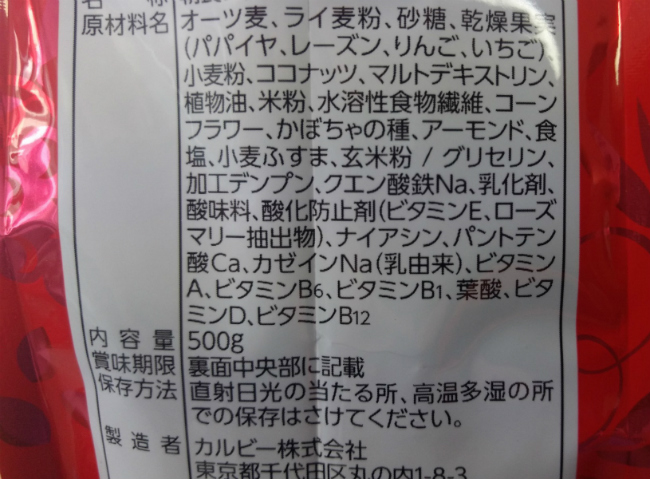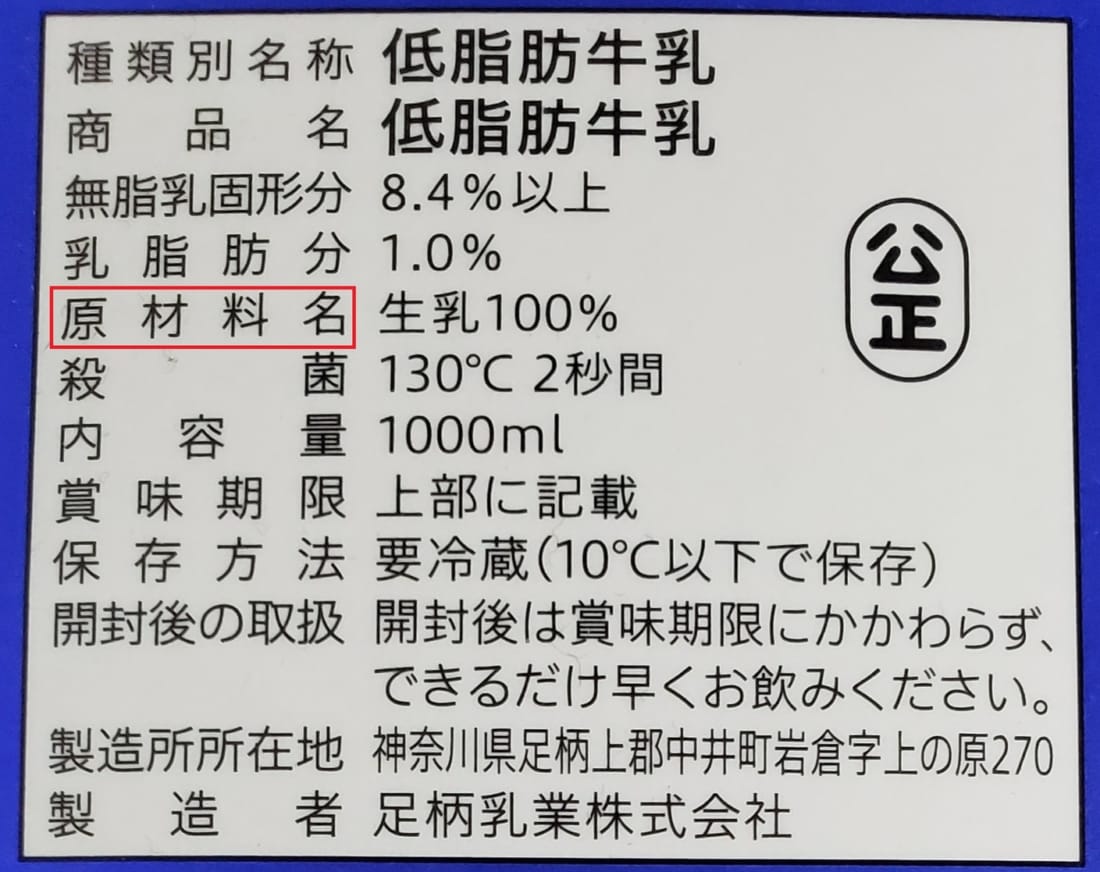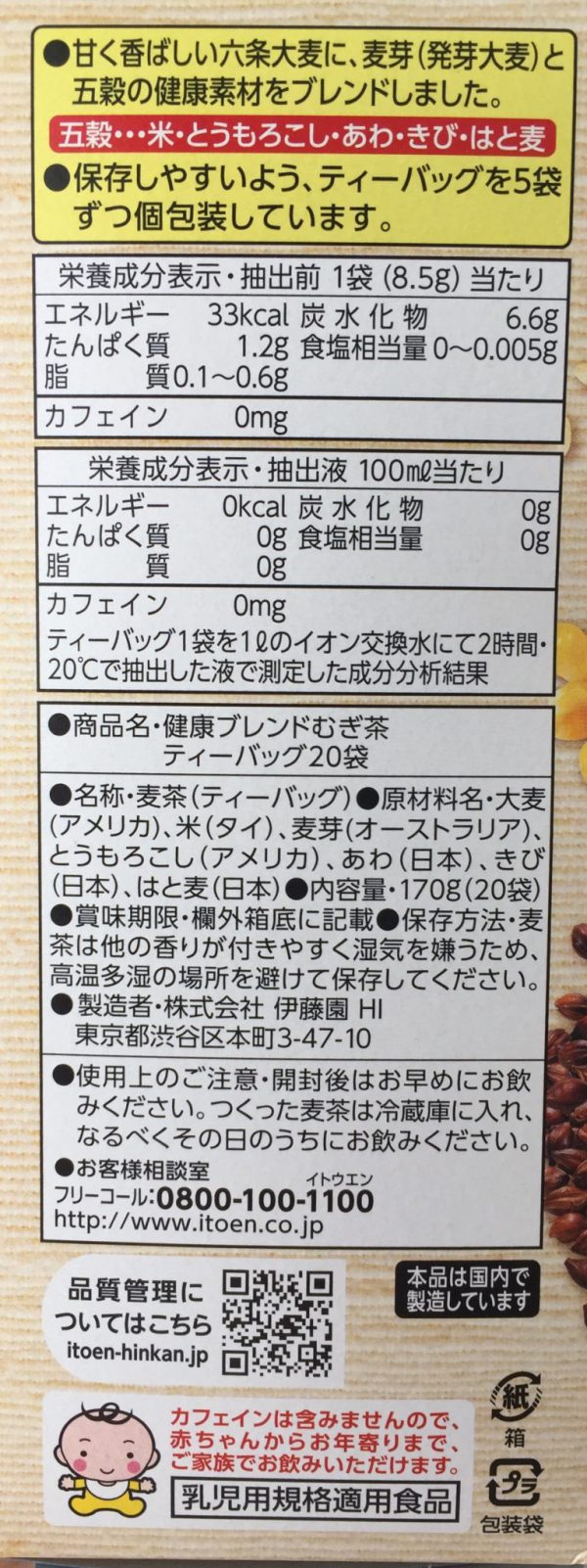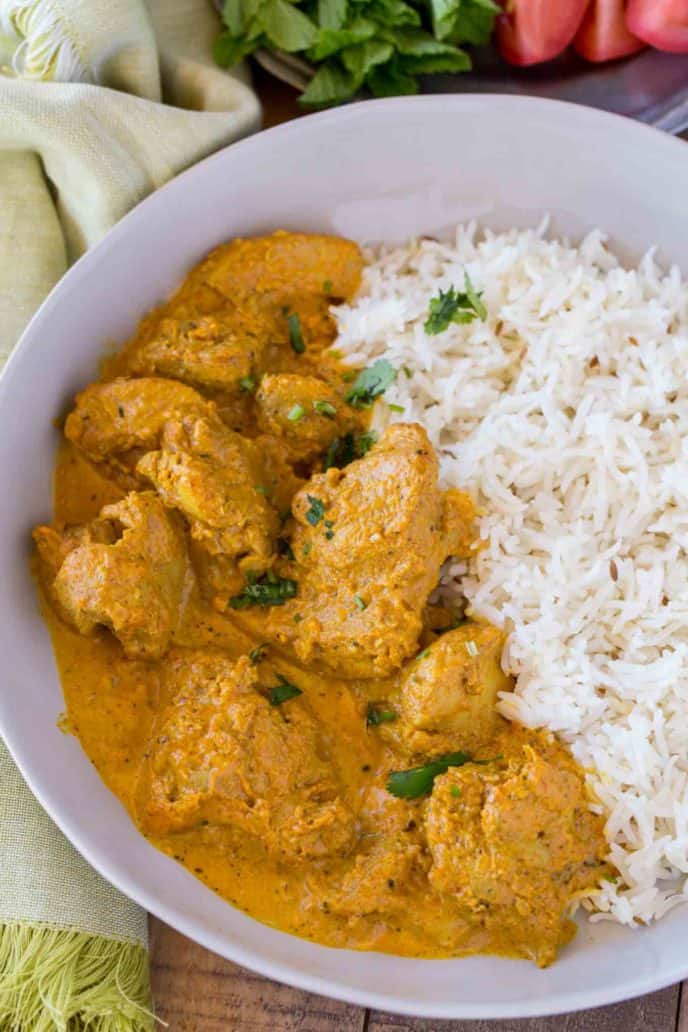40 how to read japanese food labels
The Ultimate Guide to Reading Food Labels in Japan Most labels similar to this type will then list total protein (たん白質), fat ( 脂質), carbohydrates (炭水化物), and sodium (ナトリウム), and some will list sugar, but many count sugar under the "carbohydrate" category and don't always split them so you can see how much of the carbs are sugars. It varies though. Types of Sake and How to Read Their Labels | Special | "Kampai" at Kyushu Less Than 60% or. Special Production Methods. A Flavor; A Particularly Favorable Color and Luster. Honjozo-Shu. Less Than 70%. A Flavor; A Favorable Color and Luster. Sake can be divided into 4 main types. Although the ingredients are simply water and rice, complex flavors can be expressed, depending on the method of production.
Food Allergies in Japan: How to Enjoy Traveling Safely with a Food ... The food labeling system in Japan has different requirements and only 7 core allergens are required to be labelled. A list of allergenic foods in Japan is: eggs, milk, wheat, buckwheat, peanuts, shrimp and crab. Some allergens can be listed using very different forms, such as 落花生 and ピーナッツ - both of which refer to peanuts.

How to read japanese food labels
How to Identify Japanese Pottery Porcelain Marks | Hunker Unless you're familiar with the Japanese language, identifying Japanese pottery and porcelain marks can be a daunting task. Hidden within the kanji-- the characters -- on the bottom of the piece you will typically find the production region, a specific kiln location, a potter's name, and sometimes a separate decorator's identity.But, at times only generic terms were recorded, and tracking down ... Food Allergies in Japan: How to Read Japanese Food Labels The complete list of twenty additional allergens is as follows: 1. Abalone 2. Apple 3. Banana 4. Beef 5. Cashew Nut 6. Chicken 7. Gelatin 8. Kiwi 9. Mackerel 10. Matsutake mushroom 11. Orange 12. Peach 13. Pork 14. Salmon 15. Salmon roe 16. Sesame 17. Soy 18. Squid 19. Yam 20. Walnut Beginners Guide to Supermarket Shopping in Japan - GaijinPot Blog Next is the label explaining the origin and important information regarding a supermarket's fresh produce. A Japanese food label will tell you what a product is, its quantity, its price and, most importantly, its storage instructions and its expiration date. While this list is by no means a complete guide, it's still important to ...
How to read japanese food labels. HOW TO: Find Allergy-Friendly Food in Japan 1. Prepackaged processed food (chips, orange juice cartons, cookies, etc.) 2. Canned or Jarred processed food (jam, baby food, etc.) If a product contains a miniscule amount of one of the seven allergens it will be marked; however, if it contains just a few milligrams per kilogram it will not be marked. Reading Japanese Food Labels - Allergens and Tips - Best Living Japan Food labels are 食品表示 (しょくひんひょうじ shokuhin hyou ji) in Japanese. Let's take a look at a food label before going on into the various parts of Japanese food labels and how to read them. Below is the label to a popular brand of barley (mugi) tea. Lots of text here, but if you look closely the label actually consists of 2 parts. Japanese Supermarket Guide: Must-Know Phrases, Food Label Breakdown ... In Japan, it's pretty easy to find regular cow milk (牛乳), soy milk (豆乳), and almond milk (アーモンドミルク). Cow milk in Japan comes in a wide variety, from those fortified with iron (鉄) or calcium (カルシウム), to low-fat products (低脂肪). To check exactly how much fat your milk has, look out for the fat content label (乳脂肪分). What's on a food label | NSW Food Authority Ingredients. Ingredients must be listed in order by weight, with the largest ingredient first. The sub-ingredients of compound ingredients must also be listed and declared if they require a mandatory declaration, such as allergens. If the compound makes up 5% or more of the product, all sub-ingredients must be listed.
Expiry dates | The Japan Times Jan 20, 2014 Dear Alice, My teenage daughter recently turned into a food-label tyrant, apparently convinced that her doddering old parents aren't up to the job of maintaining a safe kitchen. She... Guide to Your Japanese Food Label Vocabulary | Coto Academy Guide to Your Japanese Food Labels Guide to your Japanese Bathtubs Vocabulary: エネルギー (enerugi-) Energy たんぱく質 (tanpakushitsu) Protein 脂質 (shishitsu) Fat 炭水化物 (tansuikabutsu) Carbohydrate 糖質 (toushitsu) Sugar 食物繊維 (shokubutsuseni) Fiber 食塩 (shokuen) Sodium 低カロリー (teikarori-) Low Calorie 高たんぱく質 (koutanpakushitsu) High Protein 無糖 (mutou) No Sugar The Ultimate Guide to Reading Food Labels in Japan Apr 25, 2015 - How to read and understand food and nutrition labels in Japan. Apr 25, 2015 - How to read and understand food and nutrition labels in Japan. Pinterest. Today. Explore. ... Learning Japanese. Fibonacci Golden Ratio. Learning Tips. Math Tricks. Quantum Physics. Sacred Geometry. Metaphysics. Science Nature. The math is easy. Reading Japanese Food Labels | JustBento Reading Japanese Food Labels. Submitted by anon. on Sat, 2009-09-05 07:24. I live in Japan and have trouble reading and understanding everything on food labels. Do you know if partially hydrogenated oils are used in Japanese foods, such as packaged cookies? Do you know what the word for it or "trans fat" is in Japanese or how to write it? Thank ...
Reading Nutritional Labels in Japan vs the US This one is easy to identify because the number is followed by kcal. たんぱく質 (tanpakushitsu) is equivalent to protein. 脂質 (shishitsu) is total fat and is calculated in grams (just as it is in the United States). 炭水化物 (tansuikabutsu) is carbohydrates. 20 Must-Read Books About Health and Food | Eat This Not That Jan 29, 2017 · This book gives you the 4-1-1 on how to lose 10 pounds and ultimately become a healthier you. It Starts With Food is better described as an action plan rather than a novel. . Between the pages, you will find the Whole30 program, which is a sustainable "30-day nutritional reset" that will enable you to break those pesky unhealthy habits and rid yourself of health complicatio Chowhound Thank you for making Chowhound a vibrant and passionate community of food trailblazers for 25 years. We wish you all the best on your future culinary endeavors. How to Read Food Labels : Food Network | Food Network The percent of the Daily Value that is listed on the upper portion of the food label is yet another way to gauge how much saturated fat and cholesterol are in the foods that you buy and eat. If a ...
Supermarkets Move to Simplify Date Labels to Cut Food Waste Aug 12, 2022 · Walmart Inc., a member of the group, said about 91% of its private-label food sales come from items carrying “best if used by” or “use by” labels, up from 84% in 2020 and 70% in 2016.

The Ultimate Guide to Reading Food Labels in Japan | Surviving in Japan: (without much Japanese ...
Foods to Avoid When You Have a Shellfish Allergy Oct 26, 2021 · Unfortunately, you can't trust food packaging to warn you about all shellfish. Food labeling laws in the United States only cover crustaceans, not mollusks. Only ingredients made from crustaceans must be identified on labels with an allergy warning. This can be a problem for people who have bad allergic reactions to mollusks.
How To Read Sake Label • Steamy Kitchen Recipes Giveaways On the front, you'll see "Takasago" on the left bottle. That happens to be the brewery's name. If you're not familiar with Japanese or brewery names, this might be difficult to spot. But what's important on the front of the label is the GRADE of sake. For premium, artisan sake, look for the words "Junmai" or "Junmai Daiginjo."

The Ultimate Guide to Reading Food Labels in Japan | Surviving in Japan: (without much Japanese ...
Labeling of Beer|Brewery Convention of Japan - Brewers Association of ... Currently, each beer manufacturer observes labeling legislation based on the above Cord. In July 1995, the Product Liability (PL) Law came into effect. This was an attempt to systematically protect consumers from accidents involving products. Though information had previously been shown on labels concerning product handling, unified labeling ...

How to read Japanese food label - understanding Japanese food label | Food labels, Japanese food ...
Food Additives in Japan: Everything You Need to Know Some of the most common additives in Japanese food include artificial sweeteners (such as aspartame and stevia), various colorings, and preservatives (such as sodium benzoate and sorbic acid). There are also a number of substances approved to enhance flavor, such as caffeine for bitterness, citric acid for sourness, and amino acids for umami.

meta content=' khmer sexy hot star khmer khmer fuck student sexy super star Girl Asian, hot asia ...
Recalls & Public Health Alerts | Food Safety and Inspection ... Aug 25, 2022 · EDITOR'S NOTE: Sept. 1, 2022 — This release and product labels have been updated with a correction to one UPC code. “958939019” has been updated to “9589339019.” WASHINGTON, August 25, 2022 – Pizza John’s, an Essex, Md. firm, is recalling approximately 156,498 pounds of pepperoni...
30 Great Japanese Food Packaging Designs (or at least inspired by) - AterietAteriet | Food Culture
Hong Kong’s best Japanese cocktails, izakaya and seafood ... Aug 18, 2022 · Andrew Sun has dabbled in many shades of the media spectrum for 25 years, from college radio, TV, print and online columnist to starting film festivals, managing music labels and authoring food books.
Best Dutch food in Hong Kong, plus Japanese, Korean, Thai ... Sep 07, 2022 · Andrew Sun has dabbled in many shades of the media spectrum for 25 years, from college radio, TV, print and online columnist to starting film festivals, managing music labels and authoring food books.
Tokyo Guide: How To Read Japanese Food Labels One of the first things that people look for on a label is the calorie content of that food. Japan uses the same system as the rest of the world, kcals, which is often represented as Calories, with a capital C, in the US. Weight loss and gain at the most basic level is a matter of calories into and calories out of the body.
How to Read a Dog Food Label - American Kennel Club The quantity listed on the label tells you how much of the food is in the container. This may be measured by weight, liquid measure, or by count. Products can vary in density (think wet food vs....
Quick Guide: Know And Understand Food Allergies In Japan As awareness of food allergies increases in Japan, many companies are now putting extra effort into creating foods that are safe for everyone to eat. For example, many of S&B brand's retort curry products are now completely allergy-free. Right on the front of the label, they state that this curry, which is meant for children from ages one and ...
Learn how to read and understand whiskey labels - Lifestyle Asia Kuala ... The other way, which is mostly followed by Scotch and Irish brands, is to mention the volume in centilitres or cl. If a bottle says 70 cl, it denotes 700 ml. Similarly, a 100 cl will imply 1 l and smaller quantities like 65 cl will imply 650 ml. Other details Image: Courtesy 远扩 王/ @potato_wang/ Unsplash
Japanese Decoded: Nutrition Labels - Savvy Tokyo Below is the back of a bag of rice crackers (senbei) carrying a standard Japanese nutrition label. On the top left, we see the nutritional information (栄養成分表, eiyou seibun you), which contains all the basic nutrition facts about the product, such as grams of carbohydrates, protein, and fat.
How to read a label | NSW Food Authority The country or countries where a food was grown, manufactured or packaged must appear on the label. Directions for use Directions for use must be included when there are health and safety reasons for doing so. Alcohol Alcohol labels must state the number of standard drinks and % of alcohol, and comply with general labelling laws.








Post a Comment for "40 how to read japanese food labels"